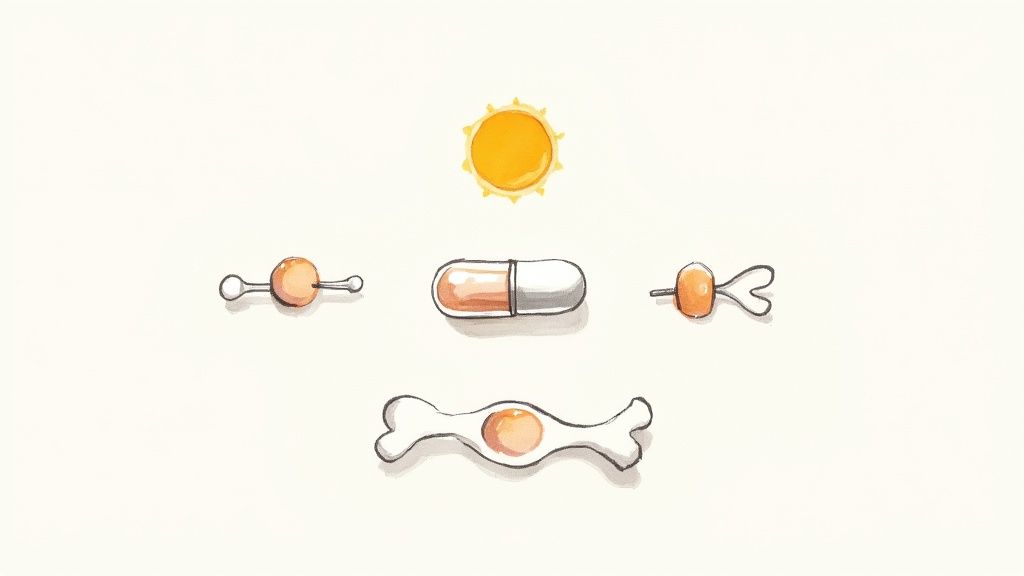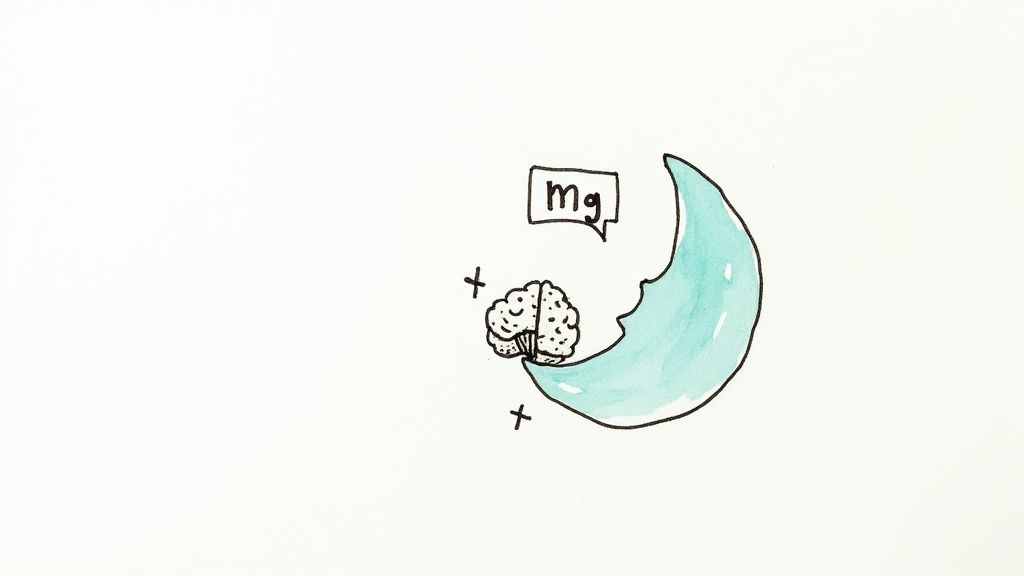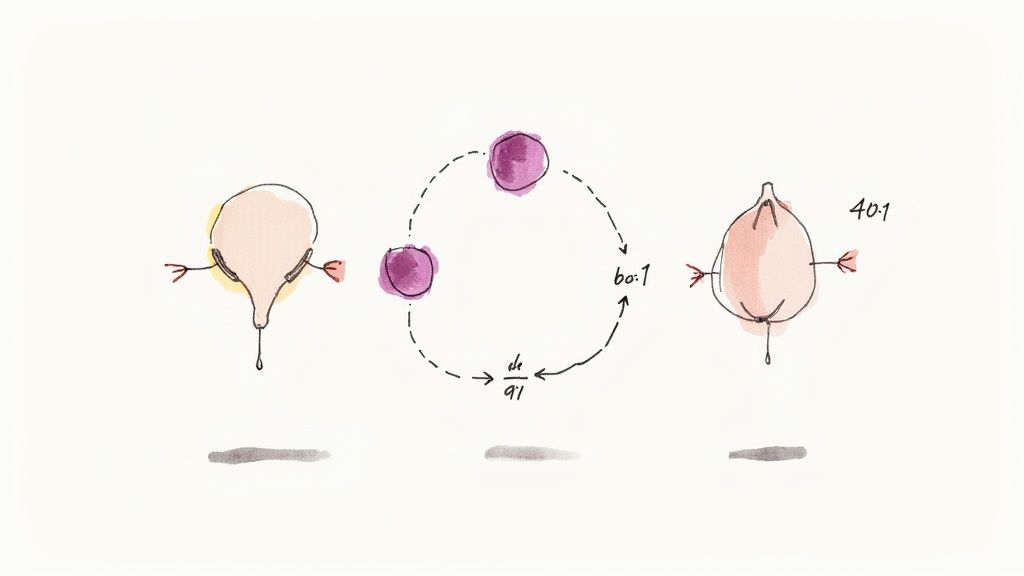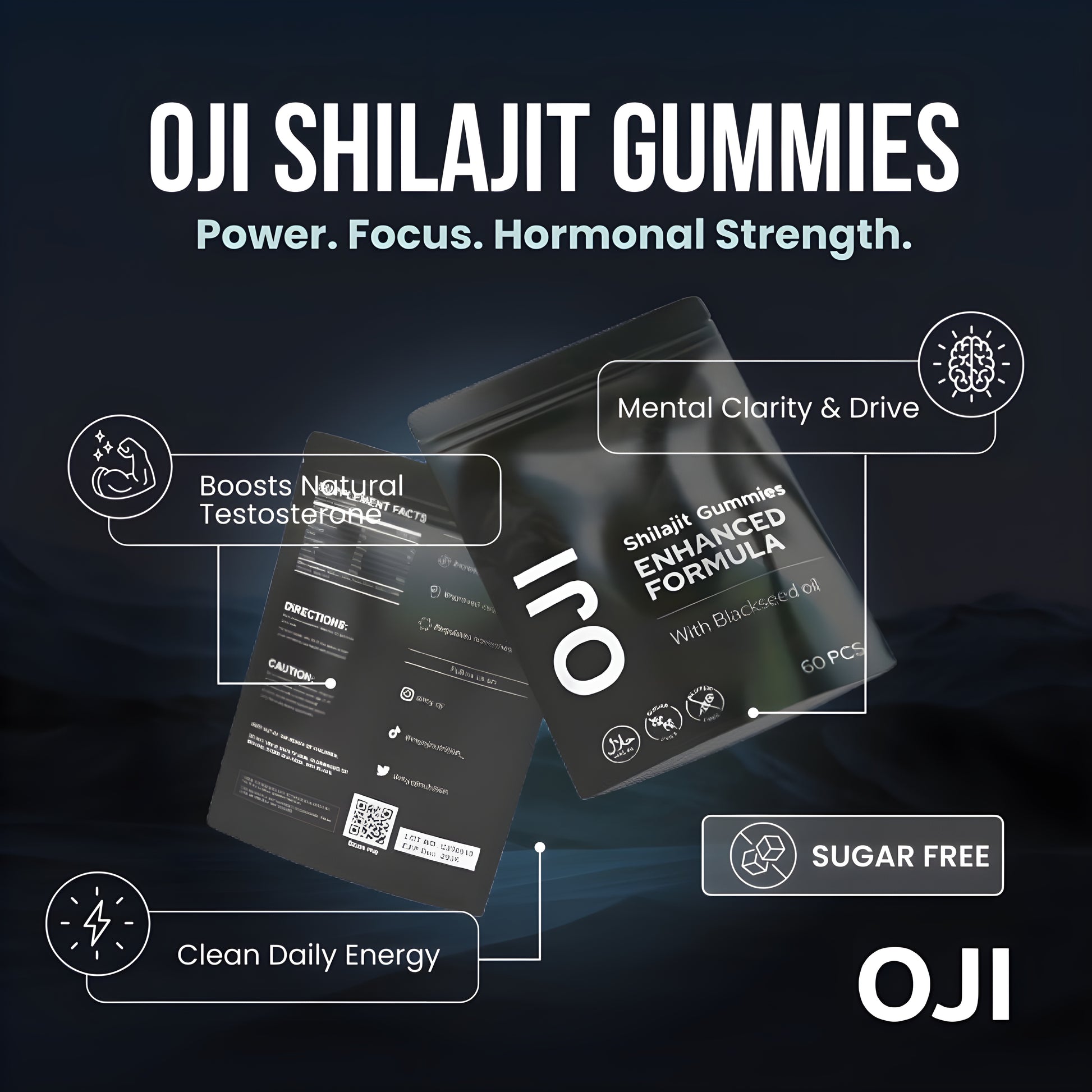Navigating female hormonal health can feel overwhelming. The symptoms of imbalance—from mood swings and fatigue to irregular cycles and energy slumps—can significantly disrupt your daily life. While the causes vary, the foundation for stability often lies in your nutrition. This guide moves beyond generic advice to provide a clear, actionable roadmap focused on the specific vitamins to balance female hormones.
We will explore eight essential vitamins, minerals, and key nutrients that play a pivotal role in regulating your endocrine system. You will learn not just what to take, but how to implement these changes effectively. For each item, we detail its function, typical dose ranges, the best food sources, and crucial safety information to help you make informed decisions.
This article is designed to empower you with the knowledge to support your body's natural rhythms. To simplify your journey towards balanced hormones, you might want to explore a dedicated Hormone Harmony Bundle that combines several key nutrients. Prepare to take a proactive step towards greater well-being with this science-backed plan for achieving hormonal equilibrium.
1. Vitamin D3
Vitamin D3, often called the "sunshine vitamin," is a fat-soluble vitamin that functions more like a hormone in the body. It plays a pivotal role in regulating the endocrine system and is essential among vitamins to balance female hormones. Its influence extends to modulating how the body utilises key hormones like estrogen and progesterone, supporting thyroid function, and critically, improving insulin sensitivity. Widespread deficiency, especially in regions with limited sun exposure, makes it a primary nutrient to consider for hormonal health.

Chronic low levels of Vitamin D are strongly linked to hormonal imbalances, including Polycystic Ovary Syndrome (PCOS), premenstrual syndrome (PMS), and menstrual irregularities. Addressing a deficiency can have a significant positive impact on these conditions by helping to restore metabolic and reproductive balance.
Why It's Crucial for Hormonal Balance
Vitamin D's impact is multifaceted. For women with PCOS, studies have shown that daily supplementation of 4,000 IU can improve insulin resistance, a core driver of the condition. Furthermore, research indicates that maintaining optimal levels through supplementation (typically 2,000-4,000 IU daily) can help regulate menstrual cycles and reduce the severity of PMS symptoms. It also works in partnership with calcium to maintain bone density, which is particularly important during perimenopause and menopause when declining estrogen levels can accelerate bone loss.
Actionable Steps for Implementation
- Get Tested First: Before supplementing, ask your GP for a blood test (25-hydroxy vitamin D) to determine your baseline levels. This is the only way to know your specific needs.
- Aim for Optimal Levels: Target a blood level between 40-60 ng/mL (or 100-150 nmol/L).
- Supplement Wisely: Based on your test results, a typical maintenance dose is 2,000-4,000 IU of Vitamin D3 daily. Follow your doctor's recommendation.
- Enhance Absorption: Take your supplement with a meal containing healthy fats (like avocado, nuts, or olive oil) to maximise absorption.
- Add Vitamin K2: Combine Vitamin D3 with Vitamin K2 to help direct calcium to your bones and not your arteries, supporting both skeletal and cardiovascular health.
2. Magnesium
Magnesium is a vital mineral, acting as a cofactor in over 300 enzymatic reactions, many of which are central to hormone regulation. It plays a significant role in managing the body's stress response by calming the nervous system and modulating cortisol levels. This makes it one of the most important minerals, alongside vitamins, to balance female hormones, particularly for alleviating symptoms like mood swings, cramping, and anxiety. Its ability to influence neurotransmitters like serotonin and GABA further supports emotional wellbeing.

Chronic stress and certain dietary habits can deplete magnesium levels, a deficiency that is prevalent among menstruating women. Low magnesium is strongly linked to more severe premenstrual syndrome (PMS) and Premenstrual Dysphoric Disorder (PMDD) symptoms, including painful cramps (dysmenorrhoea), migraines, and irritability. Restoring optimal levels can therefore provide substantial relief.
Why It's Crucial for Hormonal Balance
Magnesium’s power lies in its muscle-relaxing and nerve-calming properties. It helps to relax the smooth muscles of the uterus, directly reducing menstrual cramping. For instance, studies have shown that women taking 360mg of magnesium daily during their luteal phase (the second half of their cycle) reported a significant reduction in PMS-related pain. Furthermore, by supporting insulin sensitivity and glucose metabolism, it helps stabilise energy levels and reduce the hormonal fluctuations that can trigger sugar cravings and mood swings.
Actionable Steps for Implementation
- Choose the Right Form: Select highly absorbable forms like magnesium glycinate or threonate, which are gentle on the stomach. Magnesium citrate can be useful for constipation but may cause digestive upset.
- Determine Your Dosage: Start with a daily dose between 200-400mg. To improve absorption, split the dose, taking half in the morning and half in the evening.
- Time It for Your Cycle: Increase your intake during the luteal phase (approximately days 15-28 of your cycle) when PMS symptoms are most likely to occur.
- Take It at Night: Consume your evening dose an hour before bed to promote relaxation and improve sleep quality, which is crucial for hormonal regulation.
- Prioritise Magnesium-Rich Foods: Boost your intake by regularly consuming dark leafy greens (spinach, kale), nuts (almonds, cashews), seeds (pumpkin, chia), and dark chocolate.
3. Vitamin B Complex (especially B6 and B12)
The Vitamin B complex is a group of eight water-soluble vitamins that are essential for cellular metabolism and energy production. Among these, Vitamin B6 (pyridoxine) and Vitamin B12 (cobalamin) are particularly vital among vitamins to balance female hormones. They act as critical cofactors in countless biochemical reactions, including the synthesis and clearance of hormones like estrogen and progesterone, and the production of mood-regulating neurotransmitters such as serotonin and dopamine. Deficiencies are notably common, especially in women using hormonal contraceptives.
Chronic low levels of B vitamins can directly contribute to hormonal imbalance symptoms. For example, insufficient B6 is linked to elevated estrogen and low progesterone, which can worsen PMS symptoms like irritability and breast tenderness. Similarly, a lack of B12 can lead to fatigue and low mood. Restoring these levels is fundamental for metabolic function, neurological health, and hormonal harmony.
Why It's Crucial for Hormonal Balance
The B vitamins' influence on hormonal balance is profound. Vitamin B6 is essential for liver detoxification pathways that clear excess estrogen from the body, helping to alleviate symptoms of estrogen dominance. It also plays a key role in producing progesterone. Studies have shown that women supplementing with up to 100mg of B6 daily experienced significant improvements in mood-related PMS symptoms. Vitamin B12 is crucial for adrenal function and energy, helping the body cope with stress and preventing cortisol-driven disruption of the menstrual cycle.
Actionable Steps for Implementation
- Choose an Active Form: Select methylated or "active" forms for superior absorption. Look for pyridoxal-5-phosphate (P5P) for B6 and methylcobalamin for B12.
- Take a B-Complex: Since B vitamins work synergistically, a high-quality B-complex formula is often more effective than taking individual vitamins.
- Follow Dosing Guidelines: For PMS, a therapeutic dose of 50-100mg of B6 daily is often used. Do not exceed 100mg long-term without medical supervision to avoid potential nerve issues.
- Take with Food: Consume your B vitamin supplement with a meal to aid absorption and minimise any potential stomach upset.
- Request a Blood Test: If you are vegetarian, vegan, or use hormonal birth control, ask your GP to check your B12 and folate levels to guide your supplementation strategy.
4. Chasteberry (Vitex)
Chasteberry, derived from the fruit of the Vitex agnus-castus plant, is a powerful herbal supplement rather than a vitamin, but its impact on hormonal regulation earns it a firm place on this list. It works by influencing the pituitary gland to help normalise the production of key reproductive hormones. Its primary action is thought to increase luteinising hormone (LH) and modestly inhibit follicle-stimulating hormone (FSH), which encourages the body to produce more progesterone. This makes it one of the most effective natural remedies among supplements used as vitamins to balance female hormones, especially for issues related to low progesterone.
This herb is particularly renowned for addressing cyclical issues like premenstrual syndrome (PMS), menstrual irregularity, and symptoms associated with a shortened luteal phase. By promoting a healthier estrogen-to-progesterone ratio, Chasteberry can alleviate symptoms like breast tenderness, mood swings, and fluid retention.
Why It's Crucial for Hormonal Balance
Chasteberry's value lies in its targeted support for the progesterone-dominant phase of the menstrual cycle. For many women, symptoms of PMS and irregular cycles stem from relative estrogen dominance or insufficient progesterone. Clinical trials have demonstrated its effectiveness, with one study showing a 52% reduction in PMS symptoms among participants after three months of use. Another report indicated that women with irregular cycles saw a 90% improvement in regularity after consistent supplementation.
Actionable Steps for Implementation
- Choose a Standardised Extract: Look for supplements providing 400-500 mg of a standardised extract daily to ensure consistent potency.
- Be Patient and Consistent: Commit to taking Chasteberry daily for a minimum of three to six months to see its full impact, as it works gradually to rebalance your system.
- Take It in the Morning: For optimal hormonal influence, take your supplement first thing in the morning on an empty stomach.
- Know When to Stop: Discontinue use if you become pregnant. If you are actively trying to conceive or undergoing fertility treatments, consult with your healthcare provider before using it.
5. Omega-3 Fatty Acids
Omega-3 fatty acids are essential polyunsaturated fats, specifically eicosapentaenoic acid (EPA) and docosahexaenoic acid (DHA), that the body cannot produce efficiently. They are fundamental components of cell membranes and play a powerful role in managing inflammation, a key driver of hormonal disruption. By influencing the production of hormone-like substances called prostaglandins, they directly impact processes like menstrual pain and mood regulation, making them a cornerstone among vitamins to balance female hormones.
Chronic low intake of omega-3s is linked to more severe premenstrual syndrome (PMS), painful periods (dysmenorrhoea), and mood imbalances. Increasing your omega-3 intake can have a profound calming effect on the body's inflammatory response, helping to alleviate symptoms rooted in hormonal fluctuations and restore a more balanced state.
Why It's Crucial for Hormonal Balance
Omega-3s' primary benefit comes from their anti-inflammatory properties. For women experiencing painful periods, studies show that a daily intake of 1,000-2,000 mg of combined EPA and DHA can significantly reduce menstrual cramp severity. This is because omega-3s help to lower the production of inflammatory prostaglandins that cause uterine contractions. Furthermore, they are vital for brain health, supporting neurotransmitter function which can help improve mood symptoms associated with PMDD and the perimenopausal transition.
Actionable Steps for Implementation
- Choose a Quality Supplement: Select a high-quality fish oil or algae-based supplement that provides a combined total of at least 1,000-2,000 mg of EPA and DHA daily.
- Check for Purity: Look for products that are molecularly distilled or third-party tested to ensure they are free from heavy metals like mercury.
- Take with Food: Consume your omega-3 supplement with a meal that contains other healthy fats to maximise its absorption.
- Store It Correctly: Refrigerate your omega-3 supplement to prevent oxidation and keep it fresh.
- Stay Consistent: It can take up to three months of consistent daily use to notice significant improvements in menstrual symptoms and overall hormonal balance.
6. Inositol (Myo-inositol and D-chiro-inositol)
Inositol, once considered Vitamin B8, is a vitamin-like compound that plays a critical role in cellular signalling. Its two primary forms, Myo-inositol (MI) and D-chiro-inositol (DCI), are particularly vital as they act as secondary messengers for insulin. This function is fundamental for managing blood sugar and, consequently, regulating androgen hormones like testosterone, making it a cornerstone among supplements to balance female hormones, especially for those with insulin resistance.

Its significant impact on Polycystic Ovary Syndrome (PCOS) is well-documented. For many women with PCOS, an imbalance in the conversion of MI to DCI contributes to insulin resistance and high androgen levels. Supplementing with the correct ratio of these two forms can help correct this signalling pathway, leading to improved metabolic and reproductive health, including more regular menstrual cycles and better ovulation rates.
Why It's Crucial for Hormonal Balance
The effectiveness of inositol lies in its ability to directly address the root cause of many hormonal symptoms: insulin resistance. By improving the body's sensitivity to insulin, it helps lower circulating insulin levels. This, in turn, reduces the ovaries' production of testosterone, which can alleviate symptoms like hirsutism (unwanted hair growth), acne, and irregular periods. Studies have shown that a 40:1 ratio of myo- to D-chiro-inositol is particularly effective, leading to a 40% improvement in ovulation rates among women with PCOS.
Actionable Steps for Implementation
- Use the Optimal Ratio: Look for a supplement that provides a 40:1 ratio of Myo-inositol to D-chiro-inositol, which mimics the body's natural physiological balance.
- Follow an Effective Dosage: The clinically effective dose is typically 2-4 grams of myo-inositol combined with 50-100 milligrams of D-chiro-inositol per day, often split into two doses.
- Be Patient and Consistent: Commit to at least three months of consistent use to notice significant changes in your menstrual cycle or symptoms like acne.
- Take with Food: To minimise the potential for mild gastrointestinal upset, take your inositol supplement with meals.
- Combine with Vitamin D3: For enhanced benefits, especially for managing PCOS symptoms, consider combining inositol with Vitamin D3.
7. Calcium
While commonly recognised for its role in bone health, Calcium is a vital mineral that also acts as a key signalling molecule within the endocrine system. It works in close partnership with Vitamin D to regulate hormonal fluctuations, particularly those associated with the menstrual cycle. Its influence on neurotransmitter function, including serotonin, makes it one of the most important minerals, not just vitamins, to balance female hormones, especially for managing mood and physical symptoms.
A deficiency in calcium can directly worsen premenstrual syndrome (PMS) symptoms, leading to more pronounced mood swings, irritability, and water retention. Ensuring adequate intake helps to stabilise these hormonal shifts and provides a foundation for a smoother, more comfortable menstrual cycle.
Why It's Crucial for Hormonal Balance
Calcium's impact on hormonal balance is most evident in its ability to alleviate PMS. Clinical trials have demonstrated that daily supplementation can significantly reduce the severity of both mood-related and physical PMS symptoms. For example, studies show that supplementing with 1,000-1,200 mg of calcium daily leads to a notable decrease in fatigue, appetite changes, and depression associated with PMS. It does this by helping to normalise the fluctuations of oestrogen and progesterone that occur in the second half of the menstrual cycle.
Actionable Steps for Implementation
- Determine Your Total Intake: Aim for 1,000-1,200 mg of calcium daily from both diet and supplements. Track your food intake for a few days to see where you stand.
- Split Your Doses: For better absorption, divide your calcium supplement into two or three smaller doses (e.g., 500 mg twice a day).
- Choose the Right Form: Calcium citrate is often better absorbed and can be taken without food. Calcium carbonate is more common and should be taken with a meal.
- Time it Correctly: Take calcium supplements at least two hours apart from iron or zinc supplements, as they can compete for absorption.
- Pair with Co-factors: Ensure you have optimal Vitamin D and magnesium levels, as these nutrients are essential for proper calcium absorption and utilisation.
8. Selenium
Selenium is an essential trace mineral that acts as a powerful antioxidant and a critical component in hormone regulation. It is a key building block for enzymes called selenoproteins, which are vital for converting the inactive thyroid hormone (T4) into its active form (T3). Proper thyroid function is the cornerstone of the entire endocrine system, making selenium one of the most important minerals, not just vitamins, to balance female hormones. Its antioxidant properties also protect reproductive tissues from oxidative stress.
Low selenium levels are frequently observed in individuals with autoimmune thyroid conditions like Hashimoto's thyroiditis. This deficiency can impair thyroid hormone production, leading to symptoms like fatigue, weight gain, and menstrual cycle irregularities. Ensuring adequate intake helps support thyroid health, reduce inflammation, and promote reproductive wellness.
Why It's Crucial for Hormonal Balance
Selenium's primary role is in supporting the thyroid gland, the body's metabolic thermostat. Research has shown that supplementing with 200 mcg of selenium daily can significantly reduce thyroid peroxidase (TPO) antibodies in women with Hashimoto's, calming the autoimmune response. Furthermore, adequate selenium status is linked to improved fertility outcomes, including better egg quality and a healthier follicular environment, which is crucial for conception.
Actionable Steps for Implementation
- Mind Your Dose: A daily intake of 150-200 mcg is often recommended for therapeutic support. Do not exceed the upper safe limit of 400 mcg per day, as selenium can be toxic in high amounts.
- Eat Brazil Nuts Carefully: Just one to three Brazil nuts per day can typically meet your daily requirement. Due to variable selenium content in soil, it's wise not to rely on them as your sole source.
- Consider a Test: If you suspect a deficiency or have a diagnosed thyroid condition, ask your GP about testing your selenium levels.
- Pair with Vitamin E: For enhanced antioxidant benefits, consider combining selenium with Vitamin E. These two nutrients work together to protect cells from oxidative damage more effectively.
8-Point Comparison: Vitamins to Balance Female Hormones
| Item | Implementation complexity 🔄 | Resource requirements ⚡ | Expected outcomes ⭐ | Typical impact 📊 | Ideal use cases 💡 | Key advantages |
|---|---|---|---|---|---|---|
| Vitamin D3 | Low — daily oral dose; baseline 25(OH)D testing advised | Low — affordable supplements, occasional lab test | Improves estrogen regulation, bone health, mood | Moderate; PMS reduction ~30–40%, fewer irregularities | Deficiency, low sun exposure, PMS, PCOS-associated insulin issues | Well-researched; fat‑soluble hormone regulator; synergizes with K2 |
| Magnesium | Low — choose form and timing (evening preferred) | Low — multiple cost-effective forms; watch GI tolerance | Reduces cramps, lowers cortisol, improves sleep and mood | High for PMS/cramps (up to ~48% reduction) | PMS with cramping, stress/anxiety, sleep disturbances | Cofactor in 300+ reactions; muscle relaxant; several bioavailable forms |
| Vitamin B Complex (B6 & B12) | Low — oral dosing; prefer methylated forms; monitor dose limits | Low — inexpensive; methylated formulations recommended | Supports progesterone, neurotransmitter synthesis, energy | Strong for mood symptoms (B6 studies show large reductions) | PMS mood symptoms, low energy, vegetarians/vegans, contraceptive users | Targets energy and neurotransmitters; B12 crucial for vegans |
| Chasteberry (Vitex) | Moderate — herbal, requires consistent use 3–6 months | Moderate — standardized extract preferred; check interactions | Supports pituitary modulation and progesterone production | Significant for PMS/PMDD and cycle regularity (eg. ~58% symptom ↓) | Chronic PMS/PMDD, luteal-phase defects, irregular cycles | Evidence-backed herbal option; non‑estrogenic and well‑tolerated |
| Omega‑3 Fatty Acids | Low — daily capsules/oil; choose purified sources | Moderate — quality (distillation/IFOS) and storage (refrigeration) matter | Reduces inflammation, modulates prostaglandins, improves mood | High for menstrual pain (up to ~60% reduction) | Menstrual pain/cramps, inflammatory symptoms, mood support, heart health | Potent anti‑inflammatory; broad systemic benefits; vegan algae options |
| Inositol (Myo + D‑chiro) | Moderate — specific 40:1 ratio dosing; 3+ months for effect | Moderate–High — targeted formulations are pricier | Improves insulin sensitivity, reduces androgens, restores ovulation | High for PCOS (improved ovulation ~40%) | PCOS, infertility with insulin resistance, androgenic acne | Direct insulin signaling benefits; fertility and ovulation support |
| Calcium | Low — daily dosing, best split doses with vitamin D | Low — widely available foods/supplements; monitor interactions | Supports neurotransmitter balance, reduces PMS symptoms, bone health | Moderate; PMS reduction up to ~48%, bone density support | PMS, bone health maintenance, dietary deficiency | Affordable; strong evidence for PMS and bone support when paired with D3 |
| Selenium | Moderate — narrow therapeutic window; monitor total intake | Low — inexpensive supplements or dietary Brazil nuts; consider testing | Supports thyroid hormone metabolism, reduces oxidative stress, improves egg quality | Moderate for thyroid/fertility; effectiveness tied to baseline status | Thyroid-related hormone imbalance, preconception fertility optimization | Essential cofactor for glutathione peroxidase; synergizes with vitamin E |
Your Next Steps for Sustained Hormonal Balance
Targeted nutrition provides a powerful and accessible foundation for achieving hormonal equilibrium. This guide has detailed how specific vitamins to balance female hormones, from the foundational support of Vitamin D3 and Magnesium to the targeted actions of B vitamins and Inositol, play crucial roles in regulating your menstrual cycle, mood, and energy levels.
The central takeaway is that your body has an incredible capacity for self-regulation when given the right building blocks. Nutrients like Omega-3s form the structure of hormone molecules, while minerals such as Selenium and Calcium act as essential cofactors in their production. Each element discussed, including botanicals like Chasteberry, offers a unique piece of the hormonal puzzle.
However, lasting balance is rarely achieved through supplementation alone. The most effective strategy is a holistic one that integrates this nutritional knowledge into a supportive lifestyle. Your journey towards hormonal harmony is an active, daily practice of conscious choices.
Building Your Personalised Action Plan
To move from information to transformation, create a practical and sustainable plan. Avoid the temptation to implement everything at once.
Here are your actionable next steps:
-
Start with Food First: Before reaching for supplements, audit your diet. Are you consistently eating fatty fish for Omega-3s, leafy greens for Magnesium, or Brazil nuts for Selenium? Prioritise incorporating whole-food sources of these key nutrients into your daily meals.
-
Identify Your Primary Concerns: Reflect on your specific symptoms. If you struggle mainly with PMS, you might prioritise investigating Vitamin B6, Magnesium, and Chasteberry. If irregular cycles are the issue, Inositol and Vitamin D could be your focus.
-
Supplement Wisely and Systematically: Once your diet is optimised, supplements can fill the gaps. Introduce one or two supplements at a time based on your primary concerns and potential deficiencies (like the widespread lack of Vitamin D). This allows you to accurately gauge their effect.
-
Embrace Lifestyle Synergy: Remember that nutrition works in tandem with lifestyle. Commit to improving one other area that impacts hormones. This could be prioritising 7-8 hours of quality sleep, incorporating a 10-minute daily mindfulness practice to manage cortisol, or switching to low-impact exercise like yoga or walking.
Key Insight: Hormonal balance is not a destination but a dynamic state. It requires consistent attention to the interplay between what you consume, how you move, and how you manage stress. The vitamins and minerals discussed are catalysts, but your daily habits are what sustain the results.
Ultimately, taking control of your hormonal health is an empowering act of self-care. By understanding the roles of these essential vitamins and creating a holistic strategy, you are investing in your long-term vitality and well-being. Listen to your body, be patient with the process, and seek professional guidance when needed. You have the knowledge and the tools to begin building a more balanced you, starting today.
Ready to enhance your foundational health with a comprehensive mineral boost? Oji Shilajit provides over 85 trace minerals and fulvic acid, which supports nutrient absorption and the body's natural stress response-key factors in maintaining hormonal equilibrium. Explore how the ancient power of Oji Shilajit can complement your strategy for balanced hormones.





